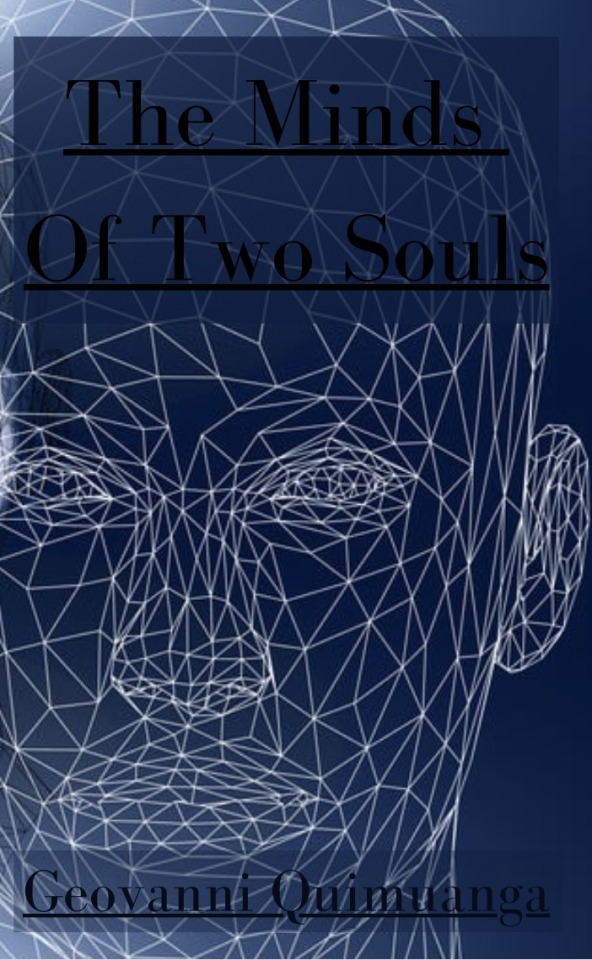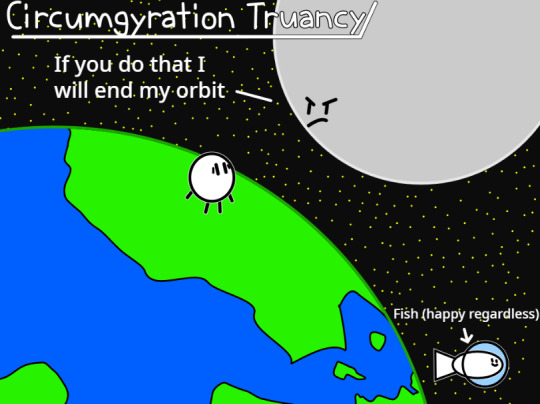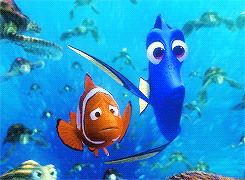#moral lessons
Text
My Teacher: write your own fairytale
Me: ends up making a really gay coded story about a fox and a wolf
Me: Perfect :)
#no regrets#and it is still a fairytale#theres magic n shit in it#and yk#moral lessons#homo#gay#gay jokes
15 notes
·
View notes
Text
"Strings of Imagination: A Masterpiece of illumination"

Carlo Collodi's timeless classic, "The Adventures of Pinocchio," masterfully translated by Carol Della Chiesa, transcends the boundaries of children's literature, enchanting readers of all ages with its whimsical charm and profound allegory.
In this literary odyssey, readers are beckoned into a world where a mischievous puppet, Pinocchio, embarks on a transformative quest, encountering a myriad of characters and challenges that mirror the complexities of human nature. Della Chiesa's translation preserves the vivacity of Collodi's original Italian, allowing readers to savor the nuances of the author's language.
The story, a delightful blend of morality and fantasy, takes readers on a rollercoaster of emotions as Pinocchio grapples with the consequences of his choices. From the mischievous antics spurred by his curiosity to the poignant lessons learned from the Blue Fairy and the wise Cricket, the narrative weaves a tapestry of moral insights. Della Chiesa's translation captures the essence of Pinocchio's misadventures, making the tale resonate with readers across generations.
The brilliance of Collodi's storytelling lies in his ability to craft a fable that entertains while conveying profound moral lessons. Pinocchio's journey from a wayward puppet to a compassionate, responsible individual mirrors the universal struggle for self-discovery and personal growth. Della Chiesa's translation elevates the narrative, ensuring that the humor, wit, and moral gravity of Collodi's work are not lost in translation.
Beyond its literary significance, "The Adventures of Pinocchio" remains a cultural touchstone, inspiring adaptations in various art forms. Della Chiesa's translation not only preserves Collodi's original brilliance but also introduces this literary gem to a broader, English-speaking audience.
In conclusion, "Strings of Imagination: A Masterpiece Unveiled" invites readers to relish the whimsy and wisdom of Collodi's classic through the impeccable translation by Carol Della Chiesa. The journey with Pinocchio is not just a delightful escape into fantasy but a profound exploration of the human experience, proving that, like Pinocchio's nose, great literature knows no bounds.
Carlo Collodi's timeless classic, "The Adventures of Pinocchio," is available in Amazon in paperback 10.99$ and hardcover 18.99$ editions.
Number of pages: 228
Language: English
Rating: 10/10
Link of the book!
Review By: King's Cat
#Pinocchio#Carlo Collodi#Carol Della Chiesa#Classic literature#Children's fiction#Fairy tale#Puppet#Geppetto#Moral lessons#Adventure#Fantasy#Wooden boy#Coming of age#Lies and consequences#Magical realism#Transformation#Nose growing#Talking cricket#Blue Fairy#Lessons in honesty#Italian literature#Puppets coming to life#Fantasy world#Lessons in morality#Bildungsroman#Folklore#Italian folklore#Whimsical#Moral character#Fantasy adventures
6 notes
·
View notes
Note
Ask game: 1. What is the main lesson of your story (e.g. kindness, diversity, anti-war), and why did you choose it?
Hi! Thanks for the question!!
The main lessons for The Ship of Undead are
That there is not inherent good nor inherent bad. There is nature, man is part of nature and is not evil but rather corrupted. Similarly life is not good and death is not bad. They happen and one is necessary for the other.
That we should start by taking matters into our own hand if we want some result. Even if that will come slowly, or it will be imperfect (which is completely fine! Slow and imperfect is better than not done)
3 notes
·
View notes
Text
Allyship and the Anne Frank question
Would you have hidden Anne Frank and her family? It's no longer a hypothetical question.
I was watching a TikTok video by Texas artist Soren Pendragon castigating those who claim to be allies of the LGBTQ+ community, but they back away at the slightest threat (à la Target). He describes them as those who fly the Pride flag 1/12 of the year and go back to their lives, while the LGBTQ+ community has to deal with attacks and repressive legislation all year.
I completely agree with…

View On WordPress
2 notes
·
View notes
Text

Mercury and the Dishonest Woodsman by Salvator Rosa
The subject of Rosa’s painting – the story of the honest woodsman – is taken from Aesop’s Fables, a collection of ancient Greek tales with moral lessons. In the story, the god Mercury takes pity on a woodsman who has accidentally dropped his axe into a river. He retrieves two axes from the water, one gold and one silver; the woodsman claims neither as his own and, as a reward for his honesty, Mercury gives him both, along with the original axe. On hearing this a dishonest woodsman threw his own tool in the river and pretended that it was made of precious metal. Rosa’s painting shows Mercury in his winged helmet emerging from the water holding a golden axe, and the woodsman dashing forwards to claim it. The god, disgusted by the man’s dishonesty, denied him the axe.
#mercury#dishonest woodsman#salvator rosa#aesop's fables#tales#ancient greece#art#history#woodsman#axes#gold#silver#ancient greek#europe#european#winged helmet#morals#honesty#moral lessons#aesop#classical#philosophy
15 notes
·
View notes
Text

The tragedy of King Charles III of the UK
#prince charles#queen elisabeth ii#queen of england#tragedy#princess diana#diana spencer#princess of wales#king charles uk#king charles iii#royal family#british royal family#lifelessons#advice#life advice#wisdom#moral lessons
11 notes
·
View notes
Text
Introducing my oldest published book:
The Minds Of Two Souls
Spirits, a well intentioned villain, crazy adventures, and a heartfelt lesson in the morality of human nature with a sprinkle of responsibility inside!
"Responsibilities, as they often are, become thrusted upon those most fit to handle them", a statement far too true for high school student Sarah Welston. An intellectual and mentally sound daughter of a family consisting of her mother and two much less responsible older brothers, she must learn how to manage a life of work, school, and fun. Between meeting a potential coworker, finding time to hang out with her best friend, and avoiding the gazes of strange individuals in black cars following her daily routine, the girl's mind is torn to its limit. Though life is never to kind to those who aren't weary of its surprises. One day, while walking back from work, an accident pronounces her dead the next day. After a fairly instant panic session, she soon accepts that she had done many good things in her life, and is allowed into heaven where the girl meets Saint Peter, keeper of heaven’s keys. As he reviews her good deeds, and the bad, he begins opening heaven’s gates before abruptly closing them, announcing that she could not enter for some strange reason. Hearing the good news, Sarah is dragged back down to Earth and finds her body laying in bed, breathing, and, before she knew it, it suddenly wakes up before her, questioning where it is as it resumes Sarah’s daily chores. She finds questions racing through her head: Who was this imposter? What were they doing in her body? And why wasn’t she dead?

#original story#new books#action#adventure#self publication#moral lessons#this one is personally my least favorite but it’s also the first that I published so here goes nothing#Geovanni Quimuanga
5 notes
·
View notes
Text

"Circumgyration Truancy"
#multifarious#conundrum#comics#happy regardless#fish#moonangry#fish (happy regardless)#moral lessons#orbital unengagement#dictionary time#to scale
2 notes
·
View notes
Text
Marlin & Dory’s friendship goals

Inclusion is a generic moral lesson found in many children's movies. Finding Nemo's plot relies on Dory and Marlin learning to get along so they can find Nemo. Nemo learns through his own adventure how to trust in his own abilities. "Most writers tend to focus more on a relationship grounded in commonality than one that is not…Despite their differences, Marlin and Dory have a very close relationship. Firm believers in inclusiveness would argue that Dory and Marlin's relationship translates to the wider realms of society." (Draman, 2)
Showing two characters cultivating a relationship from shared experiences and needs is healthy. Relationships that last are about more than commonalities. Draman expresses that Finding Nemo director "Andrew Stanton clearly illustrates the belief of inclusivity through a fictional world when enabling Nemo to make significant contributions to society." (Draman, 3)
In my opinion, writing disabled characters who participate in the "fictional society" is the bare minimum and maybe progressive for its time, but nothing to praise.
Stanton has stated his inspiration came from family. I find Finding Nemo's family dynamics very realistic. Praising a plot for writing circumstances where characters who are different are included is how things should be in a children's film. Finding Nemo presents relatable themes of friendship, family, and change.
The "resistance" of Marlin to accept Dory mimics real hesitations some people have about disability.
Marlin thinks short-term memory loss is fiction.
And goes as far as to say, "there's something wrong with you."
This thought wouldn't belong in a perfectly inclusive society. Fictional stories are relatable because they have connections to reality. Portraying Marlin as having assumptions about Nemo and Dory mirrors real cultural expectations. This realism is what makes Finding Nemo such a compelling story.
Source
Draman, Alexa. "Swimming for Inclusion." The Review: A Journal of Undergraduate Student Research 17 (2016): -. Web. <https://Csherpub.sjfc.edu/ur/vol17/iss1/3>
#opinion#inclusion#moral lessons#childhood movies#disability representation#relationships#family#family dynamics#disabled family#Finding Nemo#Pixar#Andrew Stanton#frienship#friends#disabled characters#personal growth#diversity#realisticrepresentation#good storytelling#disability culture#marlin finding nemo#dory#marlin#parenting#society
2 notes
·
View notes
Link
Dive into the heart of Maycomb County with our latest article - Boo Radley Character Analysis: Unveiling the Myth. Explore the misunderstood hero of To Kill a Mockingbird, and discover the moral lessons and deep empathy hidden within Harper Lee's classic. Perfect for literature lovers and those seeking to understand the power of looking beyond appearances.
0 notes
Text
Unraveling Humanity's Foibles: A Journey Through Gulliver's Travels

Jonathan Swift's "Gulliver's Travels into Several Remote Nations of the World" is a literary masterpiece that takes readers on a captivating voyage through the eccentric and fantastical realms of satire and social commentary. Originally published in 1726, Swift's novel presents the extraordinary adventures of Lemuel Gulliver, a ship's surgeon who finds himself shipwrecked on four distinct and peculiar lands, each inhabited by beings with their own peculiar customs and ideologies. Through Gulliver's encounters with the Lilliputians, Brobdingnagians, Laputans, and Houyhnhnms, Swift employs biting satire and biting wit to critique various aspects of human nature, society, politics, and religion.
The novel's first section, set in the land of Lilliput, offers a scathing commentary on the pettiness and absurdity of human politics and power struggles. Through Gulliver's experiences as a giant among tiny inhabitants, Swift exposes the folly of war, bureaucracy, and the arbitrary nature of authority. The absurdity reaches its peak with the absurd ritual of Lilliputian politics, including the infamous "Big-Endians" versus "Little-Endians" dispute, which serves as a thinly veiled critique of religious schisms and sectarianism.
In contrast, the second section of the novel transports Gulliver to the land of Brobdingnag, where he becomes a miniature among giants. Here, Swift shifts his focus to a critique of human vanity, arrogance, and the flawed nature of humanity itself. Through Gulliver's observations of the benevolent yet morally repugnant Brobdingnagians, Swift highlights the inherent depravity and moral corruption of human civilization, challenging readers to confront their own flaws and shortcomings.
The third section of "Gulliver's Travels" takes Gulliver to the floating island of Laputa, a realm inhabited by impractical intellectuals and absurd scientific endeavors. Through biting satire and absurd scenarios, Swift lampoons the folly of intellectualism divorced from practicality, as well as the dangers of unchecked scientific experimentation and technological hubris. The Laputans' obsession with abstract theories and impractical inventions serves as a cautionary tale against the pursuit of knowledge at the expense of humanity's moral and ethical obligations.
Finally, in the fourth section of the novel, Gulliver finds himself in the land of the Houyhnhnms, a society of rational, equine beings who govern themselves with reason and virtue. Through Gulliver's interactions with the Houyhnhnms and their brutish human-like counterparts, the Yahoos, Swift offers a stark critique of human nature itself. The Houyhnhnms' rationality and virtue stand in stark contrast to the base instincts and moral degradation of the Yahoos, leading Gulliver to question his own humanity and the nature of civilization itself.
In conclusion, "Gulliver's Travels" is a timeless work of satire and social commentary that continues to resonate with readers today. Through Swift's masterful storytelling and biting wit, the novel offers a profound exploration of human nature, society, and the follies of civilization. By presenting readers with a series of fantastical yet eerily familiar worlds, Swift challenges us to reflect on our own flaws and shortcomings, making "Gulliver's Travels" a compelling and thought-provoking read for audiences of all ages.
Jonathan Swift's "Gulliver's Travels into Several Remote Nations of the World" is available in Amazon in paperback 16.99$ and hardcover 22.99$ editions.
Number of pages: 344
Language: English
Rating: 9/10
Link of the book!
Review By: King's Cat
#Gulliver's Travels#Jonathan Swift#Satire#Social commentary#Political allegory#Lilliputians#Brobdingnagians#Laputa#Houyhnhnms#Yahoos#Fantasy#Adventure#Exploration#Critique of society#Political satire#Human nature#Travel narrative#Political intrigue#Cultural differences#Moral lessons#Allegorical fiction#Absurdity#Irony#Critique of government#Parody#Political corruption#Religious satire#Intellectualism#Scientific hubris#Moral degradation
0 notes
Text
Why Did the People Not Make it into the Promised Land?
This blog delves into the story of the Israelites not entering the Promised Land, exploring themes of faith, trust, and human struggle. It intertwines religious narratives with modern relevance, reflecting on how ancient tales resonate in contemporary...
Introduction: A Journey of Faith and Faltering
Picture this: a multitude, freed from bondage, stands at the threshold of a land flowing with milk and honey. Promised, yet perplexing. The story of the Israelites not entering the Promised Land is one that weaves through the complex tapestry of faith, human emotion, and divine will. Why, after years of wandering, did they not set foot in that…

View On WordPress
#ancient history#community challenges#cultural significance#divine will#existential questions#faith#historical interpretation#human emotions#modern relevance#moral lessons#philosophical exploration#religious narratives#religious traditions#spiritual journey#ThinkTank Theorium#ThunkDeep#ThunkSpiracy#trust and skepticism
0 notes
Text
Unraveling Humanity's Foibles: A Journey Through Gulliver's Travels

Jonathan Swift's "Gulliver's Travels into Several Remote Nations of the World" is a literary masterpiece that takes readers on a captivating voyage through the eccentric and fantastical realms of satire and social commentary. Originally published in 1726, Swift's novel presents the extraordinary adventures of Lemuel Gulliver, a ship's surgeon who finds himself shipwrecked on four distinct and peculiar lands, each inhabited by beings with their own peculiar customs and ideologies. Through Gulliver's encounters with the Lilliputians, Brobdingnagians, Laputans, and Houyhnhnms, Swift employs biting satire and biting wit to critique various aspects of human nature, society, politics, and religion.
The novel's first section, set in the land of Lilliput, offers a scathing commentary on the pettiness and absurdity of human politics and power struggles. Through Gulliver's experiences as a giant among tiny inhabitants, Swift exposes the folly of war, bureaucracy, and the arbitrary nature of authority. The absurdity reaches its peak with the absurd ritual of Lilliputian politics, including the infamous "Big-Endians" versus "Little-Endians" dispute, which serves as a thinly veiled critique of religious schisms and sectarianism.
In contrast, the second section of the novel transports Gulliver to the land of Brobdingnag, where he becomes a miniature among giants. Here, Swift shifts his focus to a critique of human vanity, arrogance, and the flawed nature of humanity itself. Through Gulliver's observations of the benevolent yet morally repugnant Brobdingnagians, Swift highlights the inherent depravity and moral corruption of human civilization, challenging readers to confront their own flaws and shortcomings.
The third section of "Gulliver's Travels" takes Gulliver to the floating island of Laputa, a realm inhabited by impractical intellectuals and absurd scientific endeavors. Through biting satire and absurd scenarios, Swift lampoons the folly of intellectualism divorced from practicality, as well as the dangers of unchecked scientific experimentation and technological hubris. The Laputans' obsession with abstract theories and impractical inventions serves as a cautionary tale against the pursuit of knowledge at the expense of humanity's moral and ethical obligations.
Finally, in the fourth section of the novel, Gulliver finds himself in the land of the Houyhnhnms, a society of rational, equine beings who govern themselves with reason and virtue. Through Gulliver's interactions with the Houyhnhnms and their brutish human-like counterparts, the Yahoos, Swift offers a stark critique of human nature itself. The Houyhnhnms' rationality and virtue stand in stark contrast to the base instincts and moral degradation of the Yahoos, leading Gulliver to question his own humanity and the nature of civilization itself.
In conclusion, "Gulliver's Travels" is a timeless work of satire and social commentary that continues to resonate with readers today. Through Swift's masterful storytelling and biting wit, the novel offers a profound exploration of human nature, society, and the follies of civilization. By presenting readers with a series of fantastical yet eerily familiar worlds, Swift challenges us to reflect on our own flaws and shortcomings, making "Gulliver's Travels" a compelling and thought-provoking read for audiences of all ages.
Jonathan Swift's "Gulliver's Travels into Several Remote Nations of the World" is available in Amazon in paperback 16.99$ and hardcover 22.99$ editions.
Number of pages: 344
Language: English
Rating: 9/10
Link of the book!
Review By: King's Cat
#Gulliver's Travels#Jonathan Swift#Satire#Social commentary#Political allegory#Lilliputians#Brobdingnagians#Laputa#Houyhnhnms#Yahoos#Fantasy#Adventure#Exploration#Critique of society#Political satire#Human nature#Travel narrative#Political intrigue#Cultural differences#Moral lessons#Allegorical fiction#Absurdity#Irony#Critique of government#Parody#Political corruption#Religious satire#Intellectualism#Scientific hubris#Moral degradation
0 notes
Text
How does one recognize the significance of storytelling in Middle Eastern art?
Storytelling has always held a central place in Middle Eastern culture, and its influence is evident in the art forms that have emerged from the region. Whether expressed through painting, sculpture, calligraphy, or other visual mediums, storytelling plays a vital role in Middle Eastern art, conveying cultural narratives, historical events, moral lessons, and personal experiences. In this…

View On WordPress
#artistic traditions#contemporary themes#cultural heritage#cultural identity#cultural narratives#cultural traditions#diversity#ethical values#folklore#heritage#historical and mythological narratives#historical events#Middle Eastern art#moral lessons#moral teachings#mythological narratives#personal experiences#personal narratives#power structures#Significance#social commentary#social issues#societal norms#storytelling#visual language#visual narration
1 note
·
View note
Text
Prince Dharmapala and the Water Demon - A Buddhist Tale of Redemption
Discover the captivating Buddhist tale of Prince Dharmapala and the Water Demon in this enchanting animated video. Join us on a journey of courage, wisdom, and redemption as Prince Dharmapala, accompanied by his brothers, faces the treacherous water demon lurking in a mystical lake.
Unbeknownst to the prince, his brothers fall victim to the demon's trap, but through his astute wit and understanding of the teaching of the gods, he navigates the perilous encounter. Learn the profound lesson that unwholesome actions bring shame and fear while embracing virtuous deeds leads to self-respect and inner peace.
Immerse yourself in this short, amazing story that highlights the transformative power of wise choices and the potential for redemption. Join us in embracing the wisdom of Prince Dharmapala as we navigate life's challenges and strive to create a better world.
Don't miss this beautifully illustrated and narrated tale, which offers timeless wisdom and a reminder of the profound impact our actions can have on ourselves and others. Watch now and be inspired by the enduring teachings of Buddhism.
BuddhistTale #RedemptionStory #WisdomandVirtue #BuddhismLessons #PrinceDharmapala #WaterDemon #BuddhistWisdom #EnlightenmentStory #SelfRespect #InnerPeace #TransformativePower #VirtuousDeeds #BuddhistTeachings #AnimatedVideo #InspiringStory #LifeLessons #BuddhismStory #CourageandWisdom #MoralsandValues #SpiritualJourney
youtube
#Buddhist tale#Redemption story#Prince Dharmapala#Water demon#Buddhist wisdom#Virtuous deeds#Inner peace#Moral lessons#Inspirational video#Transformative power#Life's challenges#Buddhist teachings#Courage and wisdom#Spiritual journey#Wisdom and virtue#Enlightenment story#Self-respect#Morals and values#Animated storytelling#Lessons from Buddhism#youtube#Youtube
0 notes
